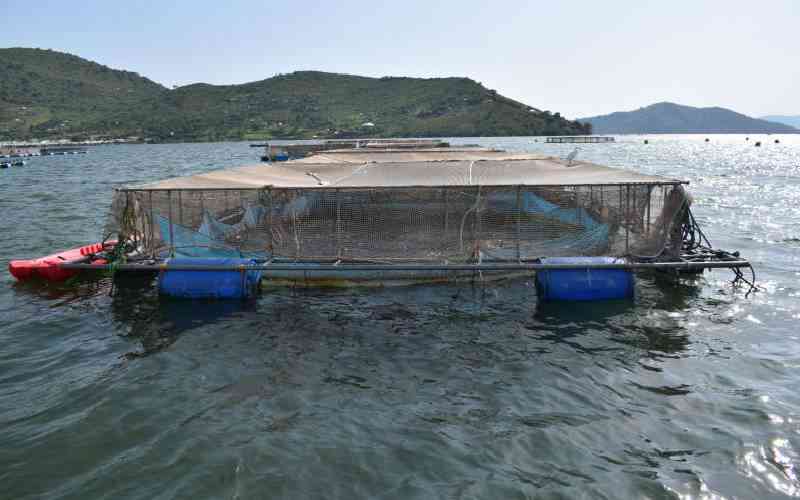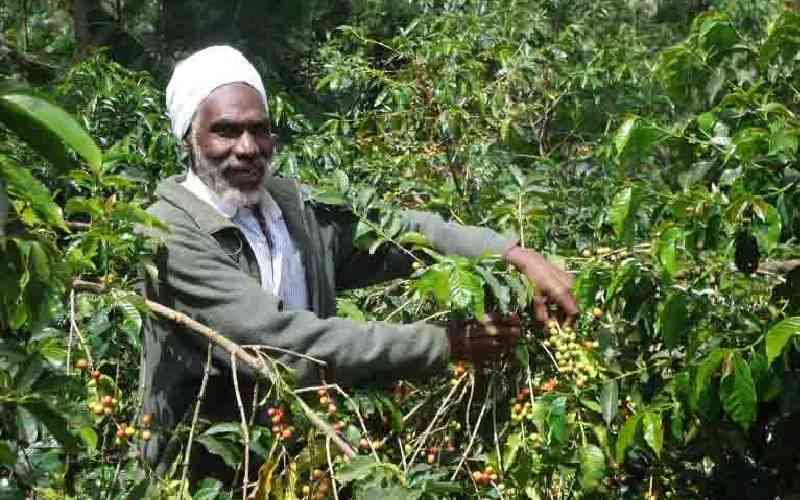In October last year, fish farmers at Nyenye Beach in Siaya County suffered massive losses after strong currents ripped through 128 cages killing more than 200, 000 fish.
Although Kenya Marine Fisheries and Research Institute (Kemfri) experts are yet to table a report on what exactly happened, local experts told the farmers that it may have been due to strong currents that hit the unsheltered shores. Prof Stephen Agong’ of Jaramogi Oginga Odinga University attributed the catastrophe to lack of oxygen, citing a complex phenomenon called upwelling - where oxygen-poor water from the bottom of the lake mix with that of the surface, decreasing the oxygenation of the surface water.
And as the farmers grapple with the losses and wait for new direction, Kenneth Omondi, an aquaculture expert who has 200 in the lake says to avoid such disasters in future, farmers have to be in the know before they venture into cage fish farming. He says lack of knowledge is partly to blame for losses incurred when fish die, or fail to grow to full size.
Not every part of the lake is ideal for farming, he explains.
The perfect location for a cage, he says, should be a sheltered beach, like a lagoon, where winds are mild and fish are not “stressed by strong currents”.
Such beaches, he says, are also sheltered from invasion by hyacinth which chokes oxygen supply, killing fish or slowing their growth.
“Winds and currents are stronger towards the shore and they are also prone to drastic changes such as rise in temperature after rains, which is not good for caged fish,” he says.
Omondi says the strong winds can also sweep away cages located in open shores.
He adds, however, that such open shores can still be utilised for cage farming.
“If you must place a cage in unsheltered shorelines, it should be large and placed at least 30 metres offshore where currents are not as strong. Lagoons cut off such currents,” he says.
Whether on a sheltered shore or in the open, Omondi advises that the cages should be at least 20 metres offshore, be suspended at least eight metres from the bottom of the lake and the net about 2.5 metres from the bottom of the cage.
An ideal cage, he says has a series of up to four nets. The first one which house the fish in the cage (the predator net), the feeds net to contain feeds so that they do not spill out, and the bag net which covers the cage preventing predators such birds.
Omondi’s advice to the farmers is backed by Kemfri.
“If you want to do commercial cage fish farming suitability is important. Check on the depth of the water and keep off navigation routes and breeding areas.
“You need water depth of six to eight metres and fish, just like any other animals, discharge waste. With enough depth the water current should carry way the waste,” says Dr Christopher Aura, a researcher at Kemfri. He also advises farmers to research well before rolling out project.
Stay informed. Subscribe to our newsletter
The experts agree that water hyacinth which has carpeted the lake is a challenge to fish farming. The weed chokes up oxygen, make feeding difficult and in some instances carry with them diseases, Omondi says.
“When the water hyacinth infests cages it renders water stagnant, therefore there is no water exchange hence minimal oxygen. In addition the hyacinth utilises the available oxygen and eventually causes fish to die,” he says.
He says when the oxygen supply is low, it is recommended that you starve the fish. As a consequence if the weed persists, some fish end up dying.
He adds: “The hyacinth bring with it a lot of predators at the bottom.”
Several farmers in the Winam Gulf ventured into cage farming as stocks in the open lake dropped significantly. But they now face losses because of the weed which has furiously carpeted beaches Cage farming, Omondi says is a thriving agri-business because the fish are in their natural habitat where there is exchange of water.
In Siaya County where most farmers are found, the farmers use simple materials such as plastic drums which act as wave breakers, wire mesh, nets and anchors. Metal cages can cost at least Sh60,000.
Kemfri projects that demand for fish will grow as the population rises, because “people are more conscious of their health and that’s why cheap Chinese fish imports have found a market in Kenya.”
 The Standard Group Plc is a
multi-media organization with investments in media platforms spanning newspaper
print operations, television, radio broadcasting, digital and online services. The
Standard Group is recognized as a leading multi-media house in Kenya with a key
influence in matters of national and international interest.
The Standard Group Plc is a
multi-media organization with investments in media platforms spanning newspaper
print operations, television, radio broadcasting, digital and online services. The
Standard Group is recognized as a leading multi-media house in Kenya with a key
influence in matters of national and international interest.
 The Standard Group Plc is a
multi-media organization with investments in media platforms spanning newspaper
print operations, television, radio broadcasting, digital and online services. The
Standard Group is recognized as a leading multi-media house in Kenya with a key
influence in matters of national and international interest.
The Standard Group Plc is a
multi-media organization with investments in media platforms spanning newspaper
print operations, television, radio broadcasting, digital and online services. The
Standard Group is recognized as a leading multi-media house in Kenya with a key
influence in matters of national and international interest.








